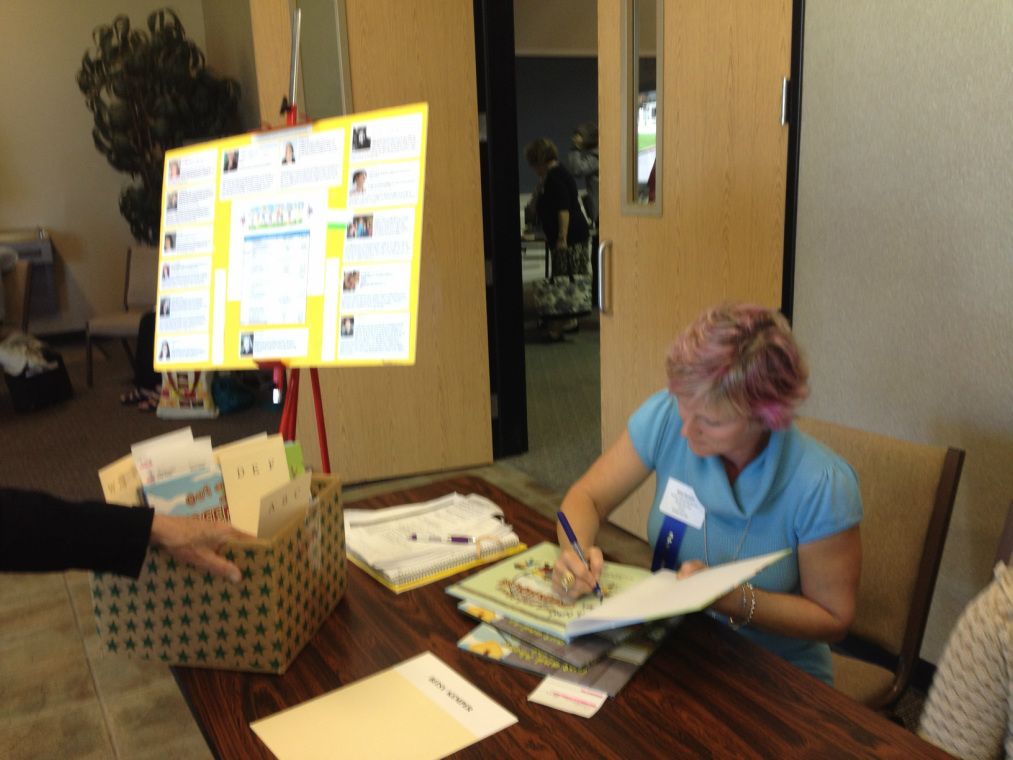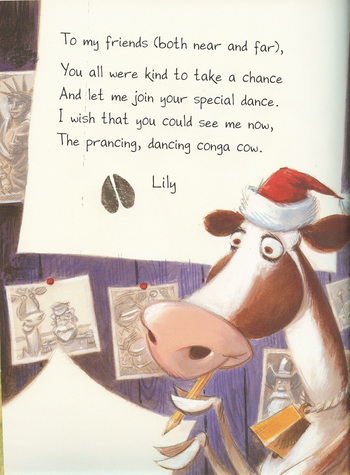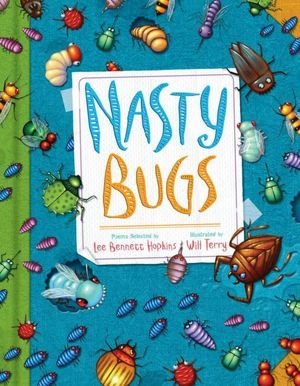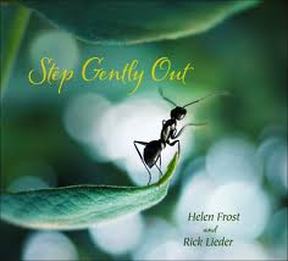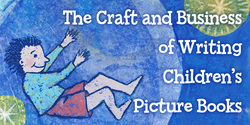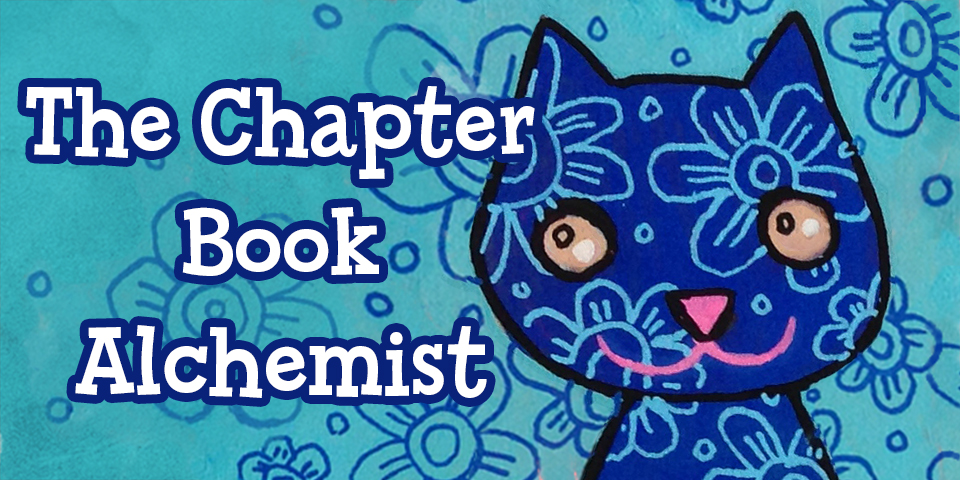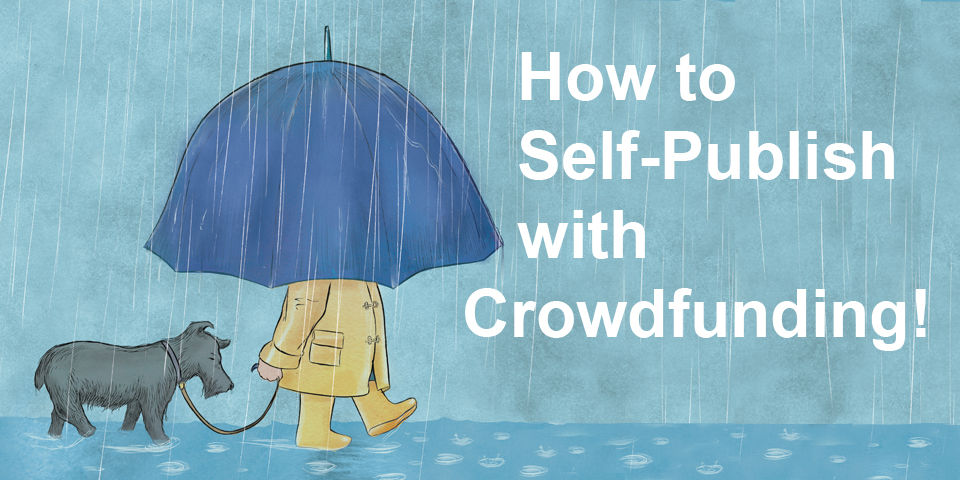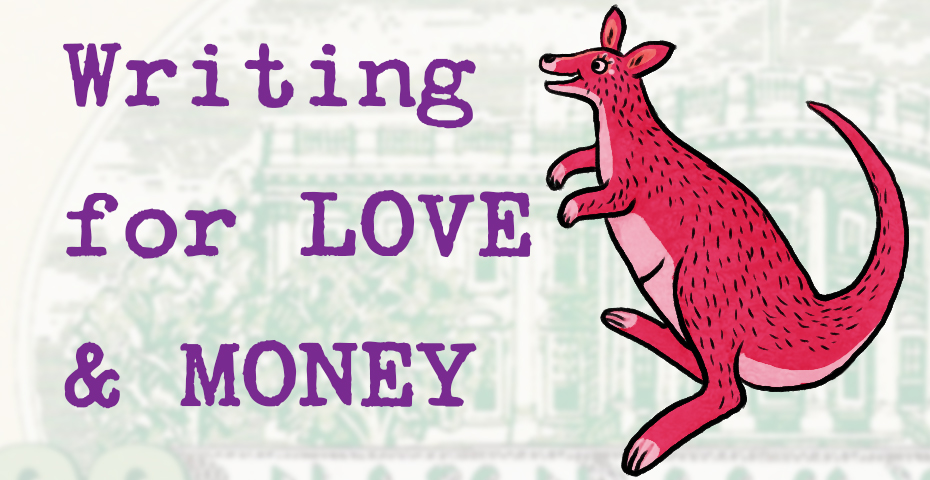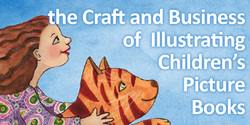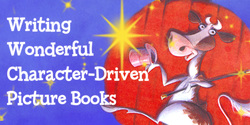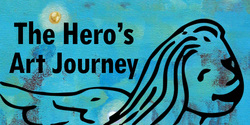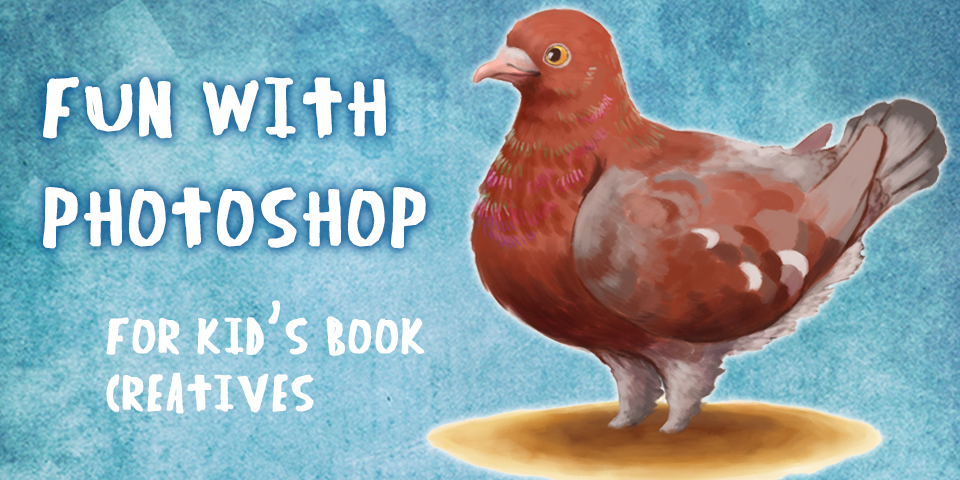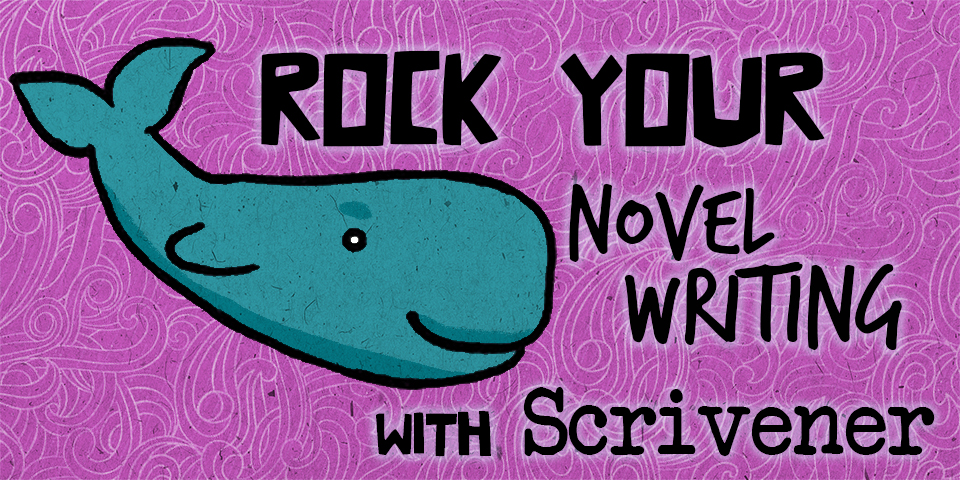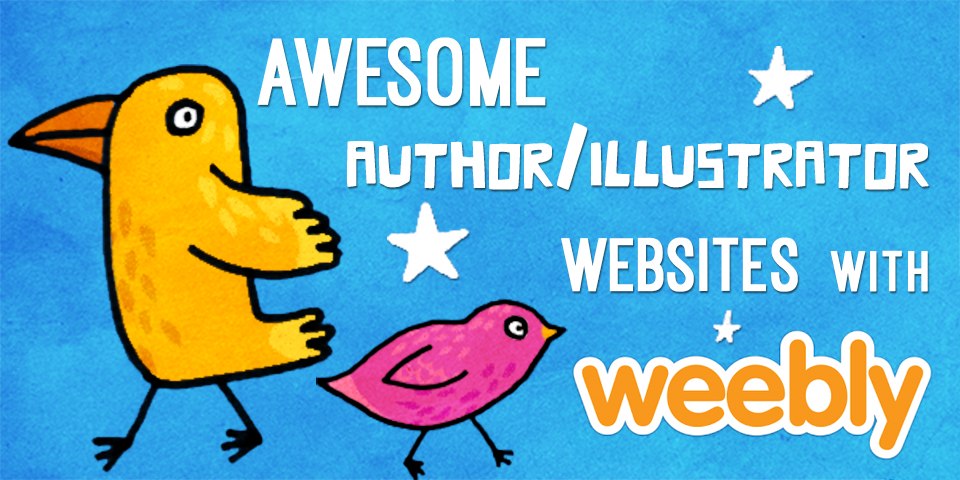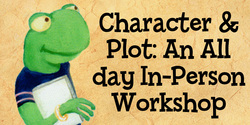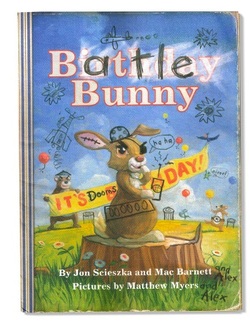 If you have ever attempted to write picture books you are faced with a ton of rules. Rules about word count, rhyme, anthropomorphic animals stand out on a long list. But I think the most important rule is to not talk down to children. The days of moralistic stories that teach a lesson are gone. Today’s kids are smart. And the quickest way to lose them is to treat them like they are not. Sure. What kid doesn’t love a poop joke or a naked tushie once in a while? But don’t underestimate a child’s ability to grasp more sophisticated humor. Parody for instance. Looney Toons – parodies of cartoons. MAD Magazine – parodies of magazines. Kids get the joke and love to have their brain bent just like adults. Enter Jon Scieszka. He gets it. “Second grade is a key age, because it’s when they’ve just become readers and feel they’ve figured out the world. They think, Here are all the rules. That’s why second-graders love parody, and why I love writing for them, taking a form and twisting it or layering in onto a different subject matter. I love the weird collision of form and content, and so do they,” says Sciezka in Funny Business: Conversations with Writers of Comedy compiled and edited by Leonard Marcus (Candlewick, 2009). Scieszka has proven he gets it with his “jump right off the page and break the fourth wall” picture books like The True Story of the Three Little Pigs and The Stinky Cheese Man and Other Fairly Stupid Tales. And on October 22 he and co-creators Mac Barnett and Matthew Myers will take the picture book world by storm once again with Battle Bunny. Get ready to have yourand your kid’s brains bent! Now if you have yet to hear about the highly anticipated Battle Bunny, you need to. You can read Betsy Bird’s fabulous School Library Journal review at http://blogs.slj.com/afuse8production/2013/07/10/review-of-the-day-battle-bunny-by-jon-scieszka-and-mac-barnett/. Seven Impossible Things Before Breakfast did a great interview at http://blaine.org/sevenimpossiblethings/?p=2584. And the book trailer featuring Barnett and Scieszka is quite hilarious and worth checking out on YouTube. But I don’t really want to talk about the book today. What I want to focus on is this brand of humor. Battle Bunny is essentially three stories in one. You have the super saccharine sweet tale of Birthday Bunny, the defaced version called Battle Bunny, and the story of Alex who received this book as a gift from his Gran Gran. Last month I brought you a post about Adam Lehrhaupt and Matthew Forsythe’s Warning: Do Not Open This Book! Another book that takes the traditional flat pages and invites children into a world beyond its physicalform. Mac Barnett’s pen and Adam Rex’s brush fought in last year’s Chloe and the Lion, which proved a funny tale about the creative process and collaboration. While at the SCBWI Summer Conference in LA I heard editors say over and over again that they are looking for books that don’t fit in a box. They want books that surprise them. Editors want voices that they have never heard before. Some have gone even so far as to say they are looking for genre breakers and books beyond category. It’s a daunting task. It can seem overwhelming. But getting there can be fun. Here’s your assignment if you choose to accept it. 1) Watch more cartoons. 2) Play with kids and let them come up with the games. Stop trying to entertain them and let them take the reins. 3) Research and read books that kids love. The ones that they want to read over and over again and spill into giggles every time. 4) Recall your own childhood and what you found funny. What is the funniest thing you remember from when you were a kid? And 5) Listen. To. Kids. That’s how these guys did it. As Betsy Bird writes, “Reading through Battle Bunny, the lesson I took away was that insipid picture books that talk down to their audiences deserve what they get. If a book doesn’t respect the child reader, kids will know and they’ll resent the book for it. Barnett and Scieszka strike that immensely difficult balance between what kids enjoy and what adults enjoy. They respect their readers’ intelligence and end up with remarkably interesting books as a result.” Lesson learned. In previous chapters Marcie Colleen has been a teacher and a theatre educator, but now she splits her days between chasing the Picture Book Writer dream and chasing toddlers on the playground as a nanny. Both are equally glamorous! Her blog, The Write Routine and her Teacher’s Guides, can be found at www.thisismarciecolleen.com. You can also follow her on Twitter. Additionally, Marcie is the Education Consultant for Picture Book Month. She contributes the 4th Friday of the month, as a Blogette, right here, posting on humor in picture books. She lives with her fiancé and their mischievous sock monkey in Brooklyn, NYC.
4 Comments
Ah, there is so much potential with creating a writer and illustrator’s platform that we’ve got several more posts to dedicate to it. Last post we discussed how your website is one way to work on your “platform.” (Refresher: a platform is a form of author branding. It means how/where/when you present yourself to the public, and how you are viewed by readers, agents, editors, fellow writers or illustrators, and anyone else paying attention. It’s a way of showing your unique qualities that “brand” you as a person, as writer or artist.)
This month we are going to look at author (or illustrator) visits. The same basic ideas also apply to any variation of book signings and other public forums where you present about your book. With apologies to illustrators, for simplicity’s sake I am going to refer to them as author visits. But please know I am talking to you, too, I just don’t feel like typing “author or illustrator visits” every time. When you create your author visit presentation, keep in mind that how it’s presented will be remembered far longer than what was presented. The bottom line is you want people to leave with a happy impression of you and your work, even if they forget very word you said. A year from now, when your next book is out, you want them to noodle back, thinking “Oh, yeah, I remember. I like her.” When I wrote my syndicated column about using the computer with your family, I encouraged parents to let toddlers play around with laptops or pcs instead of yelling NO! and ripping the device out of their sticky little hands (this was before today’s bulletproof, water- and kid-proof devices). It’s not because I was encouraging babies to learn how to program apps or design their own website. It was because I wanted to create a positive relationship between the child and the device. Parents were afraid of the child deleting files or ruining programs or what have you, when the kid just wanted to see what all the fuss was about. In a similar way, I don’t expect parents or kids to memorize your book after they see/hear you reading it at a library or bookstore. They probably won’t remember the title, or they’ll remember the title but not the topic. What I want them to walk away with is THEY LIKED IT. They like you. Positive association. Being remembered might sell another book. But more importantly, it will open more doors for more potential future sales. One visit can turn into five more, which will turn into five or ten more, etc. Just like Tupperware parties! The Tupperware agent is there to sell Tupperware, sure. But she’s really there to book more Tupperware parties where a whole new set of potential customers will be ripe for the taking! You want to stand out in the minds of not only the people in attendance, but the people who booked you. They’re going to be booking more at some point, right? Treat whoever is in charge of scheduling with utmost respect; they are the ones that will be telling their thinking-about-booking-you friends what it’s like to work with you. The next time a teacher asks her teacher friends for ideas on who to invite to Author Night, I want your name to jump to their lips. The next time a library hosts a book signing, I want your name at the top of the list. When a Girl Scout leader needs someone to help their girls earn a new patch, I want you there (uniform optional). Dress in costume, toss out candy, sing a song, have some fun! Leave people with a bounce in their step and a smile in their hearts. **** NOTE: Bitsy will be speaking and presenting marketing workshops at the RMC SCBWI "Letters and Lines" writer's conference in Denver, CO next weekend (Sept 28-29, 2013). Come say hi! **** Bitsy Kemper is author of six picture books and one YA nonfiction, her own website, three Facebook pages and two Twitter accounts. You may have seen Bitsy on CNN, heard her on national radio, noticed her quoted in anything from Parenting Magazine to Writing Children's Books For Dummies, or seen her work in countless newspapers, radio and TV stations across the U.S. Maybe you drove past her on the freeway and didn't even know it... Busy with three kids (four if you count her husband), she finds time to present at writer conferences and author visits from L.A. to N.Y. Wander over to www.BitsyKemper.com or follow her on Twitter (under, understandably, BitsyKemper). Recently, I was accepted into the Poet’s Garage. I’m not sure what possessed me to send my application when I learned they had an opening, but luckily, they accepted me. So here I am, in the Garage, a place where William Peery, founder, says "poems go to undergo repair and body work." I soon realized these folks’ vocabulary includes words like amphibrach, caesura, quatrains, and anapestic meter. WHAT? My poetry highlight is rhyming letters written by a cow. Not only that, Poet’s Garage has requirements, a certain number of poems you must critique per month and a certain number you must write and share.These folks are serious. It’s like attending a poetry workshop every day. So in honor of these serious poets, and all serious poets, I’m writing about poetry today. I know my blog theme usually involves character-driven stories and sometimes the environment. You’ll see them. I promise. Let’s begin with Nasty Bugs, a children’s book of poems, selected by the iconic Lee Bennett Hopkins. Lee’s a master poet but he also celebrates and showcases other poets. He’s in the Guinness World Records for most prolific anthologist of poetry for children! Happily, Lee’s love of theatre brought about a meeting and a friendship. He often attends a theatre where my daughter performs, choreographs and directs. He wanted to meet my daughter, but there I was, tagging along. And so the meeting happened and the friendship began. Nasty Bugs is a disgusting book ( I say that with the greatest admiration) filled with poems about things kids find fascinating, like stink bugs, bedbugs, and fire ants! The poems tell us about amazing, if sometimes repulsive, insects. Insects live in the environment. And wow! Talk about fascinating characters. (Told you I’d hit the character-driven and environmental themes. Everything is connected.) Maggot tells us this about himself: “I’m a comma In a drama Of disgusting devastation,” In Fran Haraway’s Cockroach, we read: “This tribe is tough; it perseveres. It’s lived three hundred million years.” Watch out when you read the Lice poem. You’ll definitely start scratching your head! In an effort to help my meager attempts at writing poetry, Lee advised that I study the best, one of which is Myra Cohn Livingston. Myra wrote a wondrous book on how to write poetry, published in 1991, entitled Poem-Making - Ways to Begin Writing Poetry. Her writing feels as if she’s taking the reader gently by the hand, saying, “No need to be afraid. Making a poem is joyful and exciting.” The book is out-of-print, but copies are available online. I think it should be on every poet or would-be poet’s bookshelf. Much of Myra’s poetry feels similar to her Poem-Making book, as if she was taking your hand and saying sweetly, “Come along.” She made every word spring to life. In Earth Songs she begins: “Little O, small earth, spinning in space, face covered with dizzy clouds, racing, Soon she follows with these words: Patched together With land and sea, I am earth, Great earth. Come with me! No reader could refuse such an invitation and so we follow the most majestic of characters – Earth. Yes, the poems are driven by the character, earth itself. A more recent book that marries poetry and photography, nature and character, is Step Gently Out, by Helen Frost, photos by Rick Lieder. Frost, like Cohn Livingston, gently encourages the reader to slow down and appreciate our natural world. Step gently out, Be still and watch a single blade of grass. An ant climbs up to look around. A honeybee flies past. Frost is speaking to you, the reader. But as you gently turn the pages, you meet other characters, including spiders, ants, and moths, up close and personal. So, tentatively, I joined the poets of Poet’s Garage, many of whom love poetry so much that I’m sure they write a poem a day, just as the amazing Jane Yolen does. Jane shares her daily poems with anyone who asks. If you want to be on Jane’s list to receive a poem a day, you may write her at [email protected] and request to be added to her mailing list. She adds people at the beginning of the month, so you’ll need to be patient and wait until October to receive your first “Jane poem.”
One of the best suggestions from a fellow Poet Garage member was to pick up a copy of Stephen Fry’s The Ode Less Travelled. This has got to be the best book on unlocking your inner poet around. Mr. Fry is an actor as well as novelist and comedian. You may remember him from A Fish Called Wanda. His sense of humor makes the study of enjambment and quaternary feet not only bearable, but fun. And the poet master Lee Bennett Hopkins? His suggestion is that “if you want to write poetry for children, read poetry, particularly works of the NCTE Poetry Award recipients. It will give you a crash course in the best work by America’s finest writers.” Go ahead and try it. Step happily…into a poem. Perhaps you've been there. Written or created something wonderful on your computer and then your computer crashes and your work is lost either completely or for a long moment. That was my experience this week with my blog post. All set to post and then the "blue screen of death" appeared and the post, along with several other business files, now hibernates in computer space or perhaps gone forever...I'll find out on Monday. It's times like these when we are really stretched to surrender and let go into the creative flow because there's really no other choice. Always something to learn in these moments. Is it a powerful redirect, or is it something to test your resolve, or is it simply a practice in embracing the unknown as I talked about last month. Whatever the lesson, it is a powerful reminder to go with the creative flow of life and art. But since my post isn't happening as planned, I thought I'd offer a video from my online class that just started, Painting and Photo Collage, as a substitute. My original post was going to explore how anyone can illustrate their own work and begin to look at different techniques to make this happen, so in a way this video is a nice supplement. In this video I discuss the visual understory and symbolism that lends depth and meaning to the book I illustrated, Nana's Big Surprise, by Amada Irma Perez. I also begin to look at how the artwork was constructed. Enjoy the video and here's to going with the flow! Maya Gonzalez is largely self-taught. She has illustrated over 20 award-winning multicultural children’s books and written 3 with, not an end in sight! Her latest book, Call Me Tree, set to come out next year with Lee&Low Books, is her most recent labor of love! Her fine art has shown internationally and appears in numerous books about the contemporary Chicano Art Movement including on the cover of Living Chicana Theory and Contemporary Chicana and Chicano Art: Artists, Works, Culture and Education considered to be "the Bible of Chicano/a art." Ridiculously creative, she’s probably making art as you read this or thinking about making art if she’s driving a car or using the stove. And one of her ultimate passions is inspiring others to create books, because she believes that creating children's books has the potential to be one of the most radical things you can do! |
Meet the Friday Blogonauts
First Fridays will feature Bryan Patrick Avery, published writer , man of mystery, and professional magician among other things.
Second Fridays will feature awesome multi-award winning author Marsha Diane Arnold who will be writing about character-driven and/or nature-based books and/or anything she likes :) Third Fridays will feature independent Aladdin/Simon & Shuster editor Emma Sector who has helped bring many books into the world. Fourth Fridays will feature the great Christine Taylor-Butler who has published over 70 award-winning fiction and non-fiction and nonfiction books including the acclaimed new middle grade series - The Lost Tribes. Fifth Fridays will feature the fabulous Carl Angel award-winning multi-published Illustrator and graphic designer. Join our Tribe
and receive 7 Steps to Creative Happiness, access to free webinars, and lots more!
Your email addresses are always safe and respected with us. Follow our Blog!
Archives
January 2019
Categories
All
|
|
Discover
|
About Us
|
Join Us
Join our Community and receive a fabulous free gift, KidLit tips, newsletters, scholarship info, contests, and more!
Join our KidLit Mentorship |
Social Media
Interact with our FaceBook Group or follow us on:
|
© 2010-2024 All content on this website is copyrighted. Sorry, all courses are non-refundable.
